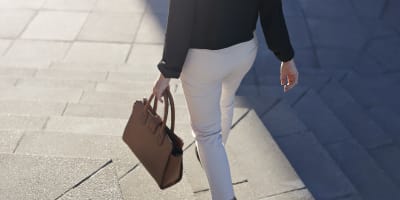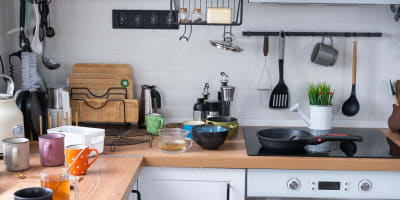To avoid catching COVID-19, never go to the grocery store at this time
This Thanksgiving is unlike any other Thanksgiving in modern history.
As the coronavirus continues to rage across the country, shoppers are contending with more than just the price of turkey this season.
For instance, most of us are wearing masks while out in public based on the recommendations of health professionals.
But, don’t count on that mask to provide 100% protection against the virus, Michael Osterholm told the New York Times.
Osterholm is a member of President-elect Joseph R. Biden Jr.’s coronavirus advisory group and director of the Center for Infectious Disease Research and Policy at the University of Minnesota.
He said that the shorter your time in the store, the less likely it is that you will catch COVID-19.
How to stay safe while shopping for Thanksgiving
1. Limit your time in public
One of the best ways to keep yourself from contracting COVID is to limit your time in public, especially in grocery stores. Rather than wandering down aisles looking at the wide variety of toothbrushes and baking flours, make a grocery list before you go and focus only on getting those items on the list.
Ventilation experts who have studied how COVID spreads recommend 30-minute shopping periods. The quicker that you can find what you need and leave, the better.
2. Limit shopping at peak hours
A recent report by Google found the safest time to go grocery shopping to be Mondays at 8 AM. The same report claimed that the worst time fell on Saturday afternoons.
“Avoiding crowds lowers your risk. It’s best not to shop Saturdays from 12 p.m. to 3 p.m.,” wrote the New York Times. During Thanksgiving week, Wednesday is often the most crowded day.
In general, grocery stores are the least crowded on Monday mornings. If you can, choose a weekday morning to do your food shopping to limit your exposure to other people.
If you can’t, try to avoid peak hours and get in and out as quickly as you can.
3. Choose contact-free payment
When paying at the register, opt for swiping your credit card rather than paying in cash. Using your credit card will limit the transfer of bacteria that is common on our currency.
4. Limit checkout conversation
Many of us like to chit-chat with the cashier as we check out, but the more that we can limit the talk, the less likely COVID will be transferred.
This study found that grocery store employees are more likely to be infected with COVID-19 than the store’s customers, making it important to limit exposure as we pay for our food, as germs are much more likely to be transferred while talking.
5. Have your groceries delivered
Shopping online lowers the risk of contracting coronavirus, and many stores offer curbside pickup.
If this is available at grocery stores in your area, consider avoiding going into the store altogether by using curbside pickup instead. Use services like Amazon Fresh, Peapod or Instacart for home delivery.
Always wear a mask when accepting the delivery.
In general, you do not need to wipe down your groceries after getting home, as the chances of catching coronaviruses from surfaces – while possible, are relatively low. Instead, make it a consistent practice to wash hands regularly and limit contact with your face.
Happy Thanksgiving!
More From Ladders
This group of people is more confident because of the pandemic
This is what the CDC says is the most dangerous thing about celebrating Thanksgiving
To avoid catching COVID-19, never go to the grocery store at this time
If you eat these regularly, you are probably healthier than all your friends
Science explains why you are addicted to oysters and champagne






